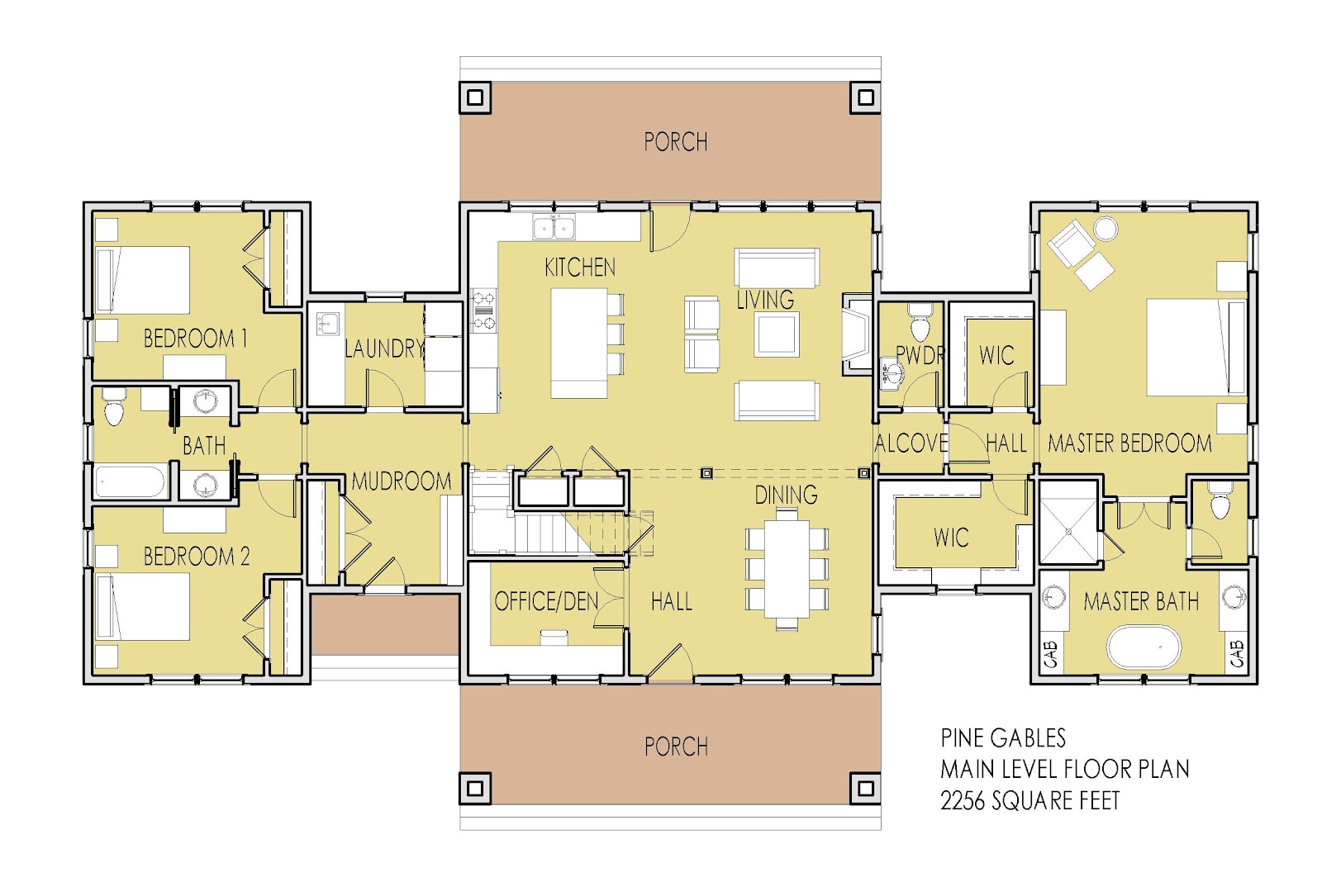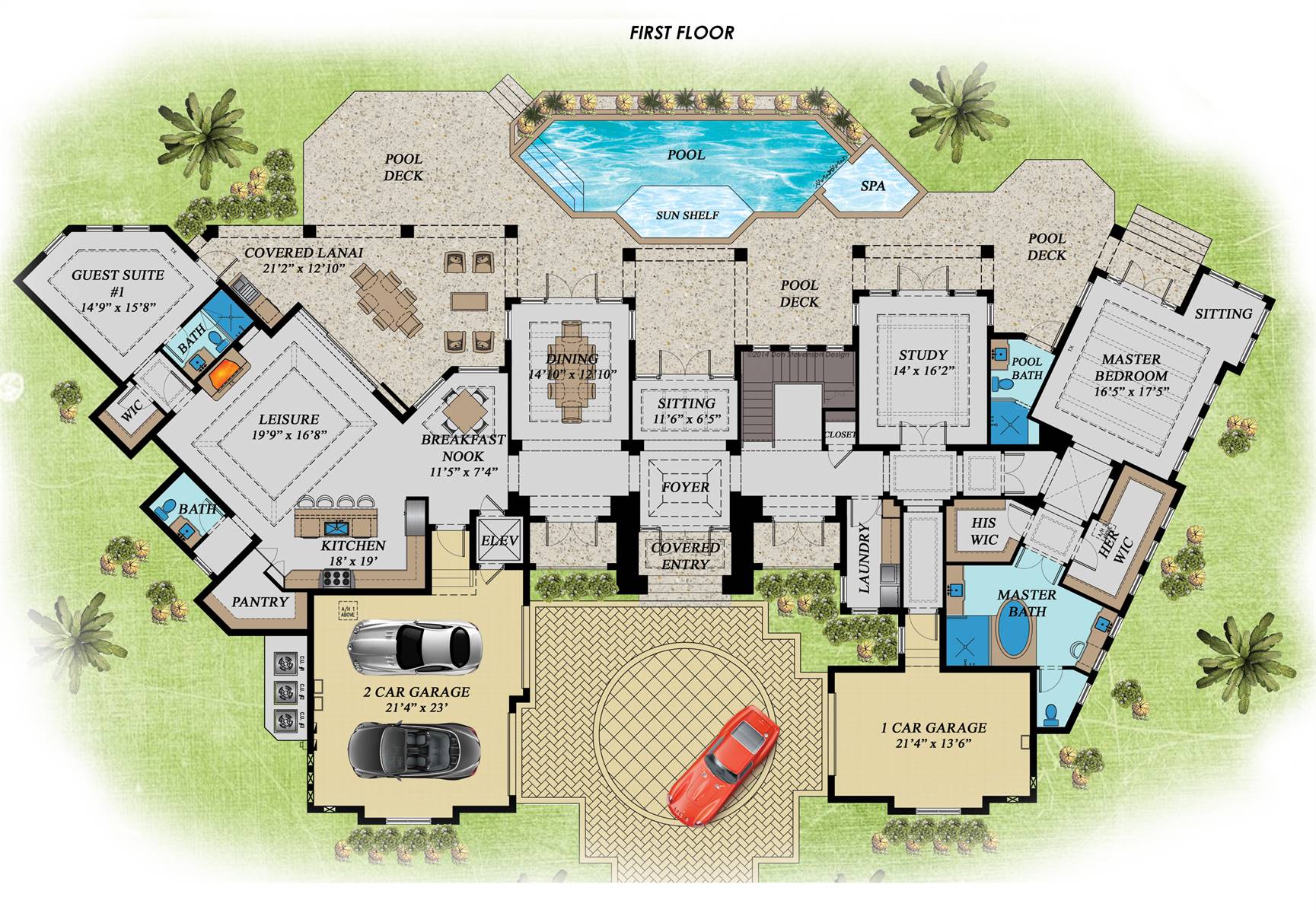Design Considerations for First-Floor Master Bedrooms: House Plans With Master Bedroom On First Floor

A first-floor master bedroom offers convenience and accessibility, especially for aging-in-place or families with young children. Designing a first-floor master bedroom that feels luxurious and maximizes space requires thoughtful planning and attention to detail.
Maximizing Space and Creating a Luxurious Feel
Creating a spacious and luxurious feel in a first-floor master bedroom involves optimizing every inch of available space.
- Utilize natural light: Maximize natural light by incorporating large windows and strategically placing furniture to allow sunlight to flow freely. This creates a sense of openness and enhances the overall ambiance.
- Choose light colors: Light colors on walls and ceilings visually expand the space, making the room appear larger. Incorporating light-colored furniture and accessories further amplifies this effect.
- Mirrors: Strategic placement of mirrors can create the illusion of more space by reflecting light and extending the visual boundaries of the room. A large mirror positioned across from a window can double the amount of natural light entering the room.
- Minimalist décor: A minimalist approach to décor keeps the room clutter-free and emphasizes clean lines, creating a sense of spaciousness and tranquility.
Layout Options for a Walk-in Closet, Bathroom, and Other Features, House plans with master bedroom on first floor
The layout of a first-floor master bedroom should cater to your specific needs and preferences.
- Open-concept layout: This layout combines the bedroom, walk-in closet, and bathroom into a single, spacious area. This creates a sense of continuity and flow, but it can also be challenging to maintain privacy.
- Separate rooms: This layout provides more privacy and allows for distinct areas for sleeping, dressing, and bathing. However, it requires more space and may limit the overall size of each individual room.
- En suite bathroom: An en suite bathroom, accessible directly from the bedroom, provides a private sanctuary for relaxation and personal grooming.
- Walk-in closet: A walk-in closet offers ample storage space and can be customized with shelves, drawers, and organizers to suit your specific needs.
Stylish and Functional Furniture Choices
The furniture you choose for your first-floor master bedroom should be both stylish and functional, contributing to the overall ambiance and maximizing space.
- Platform bed: A platform bed eliminates the need for a box spring, creating a streamlined look and freeing up space underneath the bed for storage.
- Multifunctional furniture: Opt for furniture that serves multiple purposes, such as a storage ottoman or a bed with built-in drawers. This maximizes space and reduces clutter.
- Floating shelves: Floating shelves provide a sleek and modern look while offering additional storage space without taking up floor space.
Finding the Right House Plan with a First-Floor Master

Finding a house plan with a master bedroom on the first floor is a great way to ensure accessibility and convenience, particularly as you age or if you have mobility challenges. With a plethora of options available, choosing the right plan can be overwhelming. This section will guide you through the process of finding the perfect house plan for your needs.
House Plan Styles with First-Floor Masters
Many popular house plan styles feature master bedrooms on the first floor. Here’s a table comparing some of the most common styles:
| Style | Description | Common Features |
|---|---|---|
| Ranch | One-story homes with a simple, open floor plan. | Spacious living areas, attached garage, large windows, often have a master suite on the same level. |
| Craftsman | Characterized by natural materials, exposed beams, and a focus on functionality. | Covered porches, built-in storage, often feature a first-floor master suite. |
| Cape Cod | Known for their steep roofs, symmetrical facades, and cozy interiors. | Often have a master suite on the first floor, with additional bedrooms on the second floor. |
| Colonial | Traditional homes with a formal feel, often featuring two or three stories. | May include a first-floor master suite, with other bedrooms on the upper floors. |
| Contemporary | Modern designs with clean lines, open floor plans, and large windows. | Master suites on the first floor are common, with a focus on spaciousness and light. |
Searching Online Databases and Working with Architects
Searching online databases and working with architects are crucial steps in finding the perfect house plan.
Online Databases
Online databases offer a wide range of house plans, allowing you to filter by style, size, and features. Some popular websites include:
- Floor Plans: Offers a vast selection of house plans, with various filtering options.
- Houseplans.com: Provides a diverse range of plans, including those with first-floor master bedrooms.
- Dream Home Source: Features a collection of plans from different architects and designers.
Working with Architects
Architects can help you design a custom house plan that meets your specific needs.
- Personalized Design: Architects can incorporate your preferences and requirements, resulting in a unique and tailored plan.
- Expertise: They possess knowledge of building codes, site constraints, and design principles, ensuring a functional and aesthetically pleasing home.
- Collaboration: Architects work closely with you throughout the process, providing guidance and making adjustments based on your feedback.
Considering Lot Size, Budget, and Lifestyle
When selecting a house plan, it’s essential to consider factors like lot size, budget, and lifestyle.
Lot Size
The size of your lot will influence the footprint of your home and the overall design.
- Space Considerations: Ensure that the plan fits comfortably within your lot, leaving adequate space for landscaping, parking, and other amenities.
- Orientation: Consider the sun’s path and prevailing winds to optimize natural light and ventilation.
Budget
Budgeting is crucial for building a home.
- Cost Estimates: Get accurate cost estimates for construction, materials, and labor.
- Prioritization: Determine your priorities and allocate your budget accordingly.
Lifestyle
Your lifestyle will influence your home’s design and features.
- Family Size: Consider the number of bedrooms and bathrooms needed for your family.
- Entertaining: If you enjoy entertaining, consider a spacious living area and a well-equipped kitchen.
- Hobbies: Allocate space for hobbies, such as a home office, a workshop, or a dedicated craft room.
